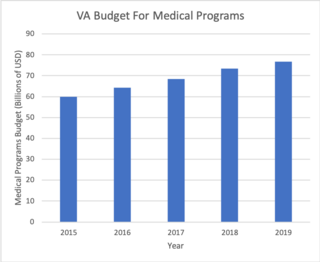Related Research Articles
Internal medicine, also known as general internal medicine in Commonwealth nations, is a medical specialty for medical doctors focused on the prevention, diagnosis, and treatment of internal diseases. Medical practitioners of internal medicine are referred to as internists, or physicians in Commonwealth nations. Internists possess specialized skills in managing patients with undifferentiated or multi-system disease processes. They provide care to both hospitalized (inpatient) and ambulatory (outpatient) patients and often contribute significantly to teaching and research. Internists are qualified physicians who have undergone postgraduate training in internal medicine, and should not be confused with "interns”, a term commonly used for a medical doctor who has obtained a medical degree but does not yet have a license to practice medicine unsupervised.

George Richards Minot was an American medical researcher who shared the 1934 Nobel Prize with George Hoyt Whipple and William P. Murphy for their pioneering work on pernicious anemia.

In a physical examination, medical examination, or clinical examination, a medical practitioner examines a patient for any possible medical signs or symptoms of a medical condition. It generally consists of a series of questions about the patient's medical history followed by an examination based on the reported symptoms. Together, the medical history and the physical examination help to determine a diagnosis and devise the treatment plan. These data then become part of the medical record.
Terminal illness or end-stage disease is a disease that cannot be cured or adequately treated and is expected to result in the death of the patient. This term is more commonly used for progressive diseases such as cancer, dementia or advanced heart disease than for injury. In popular use, it indicates a disease that will progress until death with near absolute certainty, regardless of treatment. A patient who has such an illness may be referred to as a terminal patient, terminally ill or simply as being terminal. There is no standardized life expectancy for a patient to be considered terminal, although it is generally months or less. Life expectancy for terminal patients is a rough estimate given by the physician based on previous data and does not always reflect true longevity. An illness which is lifelong but not fatal is a chronic condition.
A medical error is a preventable adverse effect of care ("iatrogenesis"), whether or not it is evident or harmful to the patient. This might include an inaccurate or incomplete diagnosis or treatment of a disease, injury, syndrome, behavior, infection, or other ailment.

The Veterans Health Administration (VHA) is the component of the United States Department of Veterans Affairs (VA) led by the Under Secretary of Veterans Affairs for Health that implements the healthcare program of the VA through a nationalized healthcare service in the United States, providing healthcare and healthcare-adjacent services to veterans through the administration and operation of 146 VA Medical Centers (VAMC) with integrated outpatient clinics, 772 Community Based Outpatient Clinics (CBOC), and 134 VA Community Living Centers Programs. It is the largest division in the department, and second largest in the entire federal government, employing over 350,000 employees. All VA hospitals, clinics and medical centers are owned by and operated by the Department of Veterans Affairs, and all of the staff employed in VA hospitals are federal employees. Because of this, veterans that qualify for VHA healthcare do not pay premiums or deductibles for their healthcare but may have to make copayments depending on the medical procedure. VHA is not a part of the US Department of Defense Military Health System.

A primary care physician (PCP) is a physician who provides both the first contact for a person with an undiagnosed health concern as well as continuing care of varied medical conditions, not limited by cause, organ system, or diagnosis. The term is primarily used in the United States. In the past, the equivalent term was 'general practitioner' in the US; however in the United Kingdom and other countries the term general practitioner is still used. With the advent of nurses as PCPs, the term PCP has also been expanded to denote primary care providers.

The University of Minnesota Medical School is an accredited medical school at the University of Minnesota. It is a combination of two campuses located in Minneapolis and Duluth, Minnesota.
Patient safety is a discipline that emphasizes safety in health care through the prevention, reduction, reporting and analysis of error and other types of unnecessary harm that often lead to adverse patient events. The frequency and magnitude of avoidable adverse events, often known as patient safety incidents, experienced by patients was not well known until the 1990s, when multiple countries reported significant numbers of patients harmed and killed by medical errors. Recognizing that healthcare errors impact 1 in every 10 patients around the world, the World Health Organization (WHO) calls patient safety an endemic concern. Indeed, patient safety has emerged as a distinct healthcare discipline supported by an immature yet developing scientific framework. There is a significant transdisciplinary body of theoretical and research literature that informs the science of patient safety with mobile health apps being a growing area of research.
A clinical prediction rule or clinical probability assessment specifies how to use medical signs, symptoms, and other findings to estimate the probability of a specific disease or clinical outcome.
Healthcare in the United States is largely provided by private sector healthcare facilities, and paid for by a combination of public programs, private insurance, and out-of-pocket payments. The U.S. is the only developed country without a system of universal healthcare, and a significant proportion of its population lacks health insurance.
Health care ratings are ratings or evaluations of health care. In the United States they have been an increasingly used tool to try to drive accountability among health care providers and in the context of classic supply/demand view of Health economics, to help health care consumers make better choices.
Unnecessary health care is health care provided with a higher volume or cost than is appropriate. In the United States, where health care costs are the highest as a percentage of GDP, overuse was the predominant factor in its expense, accounting for about a third of its health care spending in 2012.
Healthgrades Operating Company Inc., known as Healthgrades, is a US company that provides information about physicians, hospitals, and healthcare providers. Healthgrades has amassed information on over three million U.S. health care providers. The company was founded by Kerry Hicks, David Hicks, Peter Fatianow, John Neal, and Sarah Lochran, and is based in Denver, Colorado. Rob Draughon serves as the company's CEO. According to USA Today, Healthgrades is the first comprehensive physician rating and comparison database. The application is part of a trend in health technology in the United States towards consumer-driven healthcare.
Health care quality is a level of value provided by any health care resource, as determined by some measurement. As with quality in other fields, it is an assessment of whether something is good enough and whether it is suitable for its purpose. The goal of health care is to provide medical resources of high quality to all who need them; that is, to ensure good quality of life, cure illnesses when possible, to extend life expectancy, and so on. Researchers use a variety of quality measures to attempt to determine health care quality, including counts of a therapy's reduction or lessening of diseases identified by medical diagnosis, a decrease in the number of risk factors which people have following preventive care, or a survey of health indicators in a population who are accessing certain kinds of care.
Patient satisfaction is a measure of the extent to which a patient is content with the health care which they received from their health care provider.

OpenNotes is a research initiative and international movement located at Beth Israel Deaconess Medical Center.

Fitzhugh Mullan was an American physician, writer, educator, and social activist. He participated in the founding of the Student Health Organization, the National Coalition for Cancer Survivorship, Seed Global Health, and the Beyond Flexner Alliance. Mullan was a professor of Health Policy and Management and of Pediatrics at the George Washington University and the George Washington University Health Workforce Institute, now renamed the Fitzhugh Mullan Institute for Health Workforce Equity. He was an elected member of the National Academy of Medicine.

Vineet M. Arora is an American medical researcher who is the Herbert T. Abelson Professor of Medicine and Dean for Medical Education at the University of Chicago Pritzker School of Medicine. She is a Fellow of the National Academy of Medicine. Her research considers clinical medicine and medical education, with a focus on the improvement of the quality of care in teaching hospitals.
Harlan M. Krumholz, MD, SM is an American cardiologist, leading research scientist, and the Harold H. Hines, Jr. Professor of Medicine at Yale School of Medicine, where he has been on faculty since 1992. A pioneer in the development of the field of outcomes research, his groundbreaking contributions to science have directly led to improvements in healthcare outcomes for patients and populations. He is an international expert in the science to evaluate and improve the quality and efficiency of care, reduce disparities, improve integrity in medical research, promote better health policies and regulations, and promote patient-centeredness in research and clinical care. He is the founder and director of the Yale New Haven Hospital Center for Outcomes Research and Evaluation.
References
- ↑ Green, Jesse (1997). "In Search of America's Best Hospitals". JAMA. 277 (14): 1152. doi:10.1001/jama.1997.03540380066033. ISSN 0098-7484.
- 1 2 3 McGaghie, WC; Thompson, JA (October 2001). "America's best medical schools: a critique of the U.S. News & World Report rankings". Academic Medicine. 76 (10): 985–92. doi: 10.1097/00001888-200110000-00005 . PMID 11597837. S2CID 32733791.
- 1 2 Halasyamani, Lakshmi K.; Davis, Matthew M. (2007). "Conflicting measures of hospital quality: Ratings from "Hospital Compare" versus "Best Hospitals"" (PDF). Journal of Hospital Medicine. 2 (3): 128–134. doi: 10.1002/jhm.176 . ISSN 1553-5592. PMID 17549759.
- ↑ Pope, Devin G. (2009). "Reacting to rankings: Evidence from "America's Best Hospitals"". Journal of Health Economics. 28 (6): 1154–1165. doi:10.1016/j.jhealeco.2009.08.006. ISSN 0167-6296. PMID 19818518.
- 1 2 Sehgal, Ashwini R. (2010). "The Role of Reputation in U.S. News & World Report's Rankings of the Top 50 American Hospitals". Annals of Internal Medicine. 152 (8): 521–525. doi:10.7326/0003-4819-152-8-201004200-00009. ISSN 0003-4819. PMID 20404383. S2CID 207535951.
- 1 2 Manian, Farrin A.; Gillman, Melissa; Spitznagel, Ed L. (2012). "A Comparison Between Rankings of Top Hospitals by the U.S. News & World Report and the Consumer Reports Patient Ratings: Clarity or Confusion for the Empowered Consumer?". Journal of Consumer Health on the Internet. 16 (2): 162–169. doi:10.1080/15398285.2012.673462. ISSN 1539-8285. S2CID 57584266.